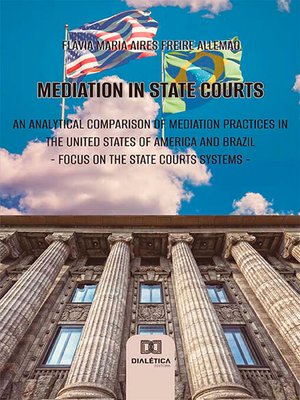Mediation in state courts
ebook ∣ an analytical comparison of mediation practices in the United States of America and Brazil
By Flávia Maria Aires Freire Allemão

Sign up to save your library
With an OverDrive account, you can save your favorite libraries for at-a-glance information about availability. Find out more about OverDrive accounts.
Find this title in Libby, the library reading app by OverDrive.



Search for a digital library with this title
Title found at these libraries:
| Loading... |
The large caseloads to be tried in the courts and the dissatisfaction of jurisdictions with the judgments are the main reasons for the application of mediation in the courts. The culture of litigation and the Civil Law system applied in Brazil are driving factors in order to arise more lawsuits, given to a greater possibility of different decisions for similar situations, in contrast to the Common Law, applied in almost all of the United States, where the citizen is more cautious when filing lawsuits, because it is more difficult to reverse a precedent. Given the need to change this situation, a movement began in Brazil to encourage agreements between the parties in the process, with the National Council of Justice having issued the Resolution No. 125/2010 instituting mediation and, later, the provision of such institute by the new Code of Civil Procedure of 2015. The previous Code of Civil Procedure, from 1973, already regulated conciliation, although it does not have the same effectiveness as mediation in the resolution of conflicts in a more definitive way, especially in demands whose conflict parties have a continued relationship among themselves, such as those involving Family Law, for example. Indeed, among the different types of alternative methods of conflict resolution, mediation is within the best results. So, it is of fundamental importance the comparative study of the mediation in Brazil and the United States, analyzing the participants of mediation, the types of mediation, how it is applied in practice in each country, the advantages and disadvantages and thinking how to improve the institute of mediation in both countries, considering the differences and similarities between them.






